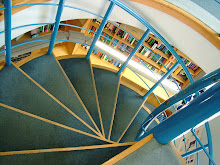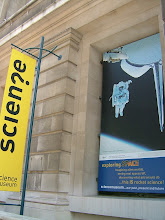By Richard Gray, Science Correspondent
Published: 8:30AM BST 09 May 2010

Albert Einstein was awarded the Nobel Prize for Physics in 1921 Photo: AFP/GETTY
Physicists hope the ambitious mission will allow them to prove the existence of gravitational waves – a phenomenon predicted in Einstein's famous theory of general relativity and the last piece of his theory still to be proved correct.
The mission, a collaboration between Nasa and the European Space Agency, will use three spacecraft flying in formation while orbiting the sun, with each housing floating cubes of gold platinum.
Laser beams fired between the spacecraft will then be used to measure minute changes in the distance between each of the cubes, caused by the weak waves of gravity that ripple out from catastrophic events in deep space.
Einstein's theory of general relativity predicted that when large objects such as black holes collide, ripples in space and time flow outwards. These ripples are called gravitational waves.
A panel of international experts have now set out a detailed plan for the mission and how it can be used to reveal new insights about the universe around us.
Professor Jim Hough, an expert on gravitational waves at Glasgow University and a member of the committee that drew up the plans, said: "Gravitational waves are the last piece of Einstein's theory of general relativity that has still to be proved correct.
"They are produced when massive objects like black holes or collapsed stars accelerate through space, perhaps because they being pulled towards another object with greater gravitational pull like a massive black hole.
"Unfortunately we haven't been able to detect them yet because they are very weak. However, the new experiments we are working on have great potential to allow detection."
Ground based attempts to detect gravitational waves on Earth have so far been unsuccessful and can only look for gravitational waves with relatively high frequencies.
Scientists have already been able to prove a number of predictions made by Einstein's theory of general relativity, including that light is bent by gravity, gravity travels at a constant speed, that time can be warped by gravity and that space and time can bend.
Einstein's other theories including his most famous formula E=mc2 have also withstood scientific testing.
The Laser Interferometer Space Antenna, or LISA as the new space based mission is called, will be able to detect gravitational waves of very low frequencies due to the huge distance between the three spacecraft. It will be the largest detector ever built.
A smaller test mission called LISA Pathfinder, which is being built by British engineers at space company Astrium EADS and is due to be launched next year, is to pave the way for the more ambitious mission by demonstrating the technology to be used to detect the waves.
Scientists have already begun building the instruments that will be used in LISA itself, but it is not expected to be launched before 2020.
They hope that once detected, gravitational waves will be able to provide new information about the universe that cannot currently be seen using electromagnetic radiation such as light, radio waves and X-rays.
Professor Sheila Rowan, who also studies gravitational waves at Glasgow University, added: "Black holes are so dense that no light or radiation escapes from inside them.
"Gravitational waves from the warped spacetime around black holes could give us new ways of looking at them.
"We could also learn about the state of matter inside collapsed stars."
Dr Ralph Cordey, science and exploration business development manager at Astrium UK who are building LISA Pathfinder, said: "Trying to measure cosmic events such as collapsing star systems or the collision of massive black holes throughout our universe requires ultra-high precision technology.
"The ultimate goal is to prove that this technology works, before we attempt to put three spacecraft into orbits at a distance of 5 million kilometres from one another, connected only by a laser beam that will measure their positions accurate to 40 millionths of a millionth of a metre."
From:http://www.telegraph.co.uk/science/space/7695994/Largest-scientific-instrument-ever-built-to-prove-Einsteins-theory-of-general-relativity.html









沒有留言:
張貼留言